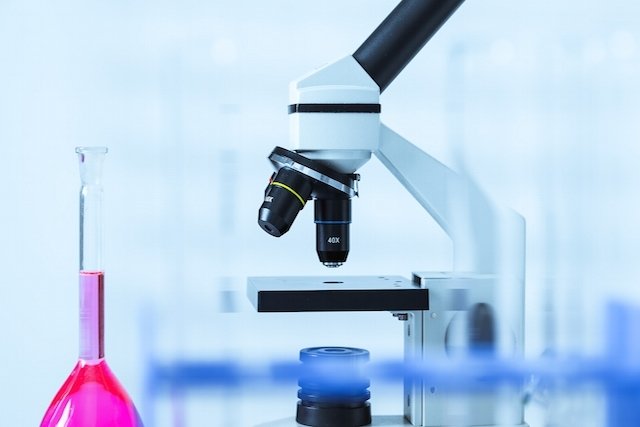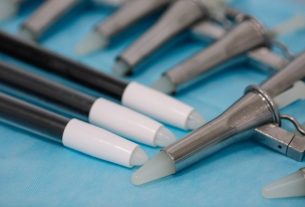Biopsy is an exam that serves to analyze the health and integrity of various tissues in the body such as skin, lung, muscle, bone, liver, kidney or spleen. The purpose of the biopsy is to observe any changes, such as changes in the shape and size of cells, which is even useful for identifying the presence of cancer cells and other health problems.
A biopsy is an invasive procedure, as it is performed using a sample of the tissue that will be analyzed. Therefore, it can be done under local anesthesia or light sedation.
When the doctor orders a biopsy, it is because there is a suspicion that the tissue has some change that cannot be seen in other tests, and therefore, it is necessary to carry out the test promptly in order to diagnose the health problem and begin treatment accordingly. as possible.

What is it for
The biopsy is used to:
- Investigate and confirm cancer;
- Evaluate skin changes in more detail, such as moles and warts;
- Identify changes in organs and tissues, in case of infectious diseases;
- Evaluate changes in organs in more detail, being useful in diagnosing changes in the liver, uterus, prostate, stomach, intestine and kidneys.
Biopsy evaluates the characteristics of cells more precisely and, therefore, is usually indicated after blood and imaging tests in which changes are identified.
Make an appointment with your nearest doctor to assess the need for a biopsy:
Taking care of your health has never been easier!
How it is made
In most cases, biopsies are performed under local anesthesia or light sedation, and are generally a quick, painless procedure that does not require hospitalization. During this procedure, the doctor will collect the material, which will later be analyzed in the laboratory.
In the case of internal biopsies, the procedure is generally image-guided, using techniques such as computed tomography, ultrasound or magnetic resonance imaging, for example, which allow observation of the organs.
After performing the biopsy, it is important to be careful with the place where the biopsy was drilled, and the area must be cleaned and disinfected according to the doctor’s instructions.
Types of biopsy
Biopsies can be classified into some types according to the organ that will be evaluated:
- Skin biopsywhich is done to evaluate any changes in the skin that may be suggestive of malignancy;
- Uterus biopsywhich serves to identify possible changes in the tissue lining the uterus that may indicate abnormal growth of the endometrium, uterine infections or cancer, for example;
- Prostate biopsywhich serves to identify possible changes in the prostate;
- Liver biopsywhich is used to diagnose cancer or other liver injuries such as cirrhosis or hepatitis B and C;
- Marrow biopsywhich helps in the diagnosis and monitors the evolution of blood diseases such as leukemia and lymphoma.
- Kidney biopsywhich is generally performed when there is protein or blood in the urine, helping to identify kidney problems.
In addition to these types, there is also liquid biopsy, in which cancer cells are evaluated, which can be an alternative to the common biopsy, which is performed by collecting a tissue sample.
The biopsy result can be negative or positive and the doctor can always ask for the test to be repeated in order to eliminate the chance of a false positive.
What is the difference between biopsy and excision?
Both biopsy and excision are done by removing tissue from any part of the body.
However, a biopsy is performed by removing a small sample of tissue, with the aim of identifying lesions and helping or confirming the diagnosis of health conditions.
Excision is performed with the total or partial removal of a tissue or organ, with the aim of treating an injury, such as in cases of skin cancer or other organs. Understand better what exeresis is and when it is indicated.
Bibliography
- AMERICAN CANCER SOCIETY. Breast Biopsy. Disponível em: <https://www.cancer.org/cancer/breast-cancer/screening-tests-and-early-detection/breast-biopsy.html>. Acesso em 21 jul 2023
- Pagana, Kathleen Deska; Pagana, Timothy J. . Guide to Laboratory and Imaging Exams for Nursing. 11 ed. Rio de Janeiro: Elsevier, 2015. pp. 161-165.
- Sousa, Ana C. et al. Percutaneous Liver Biopsy: Safety and Utility in 137 Consecutive Procedures. JOURNAL OF THE PORTUGUESE SOCIETY OF INTERNAL MEDICINE. VOL.23, N. 4; pp. 11-15, 2016.

Sign up for our newsletter and stay up to date with exclusive news
that can transform your routine!
Warning: Undefined array key "title" in /home/storelat/public_html/wp-content/plugins/link-whisper-premium/templates/frontend/related-posts.php on line 12
Warning: Undefined array key "title_tag" in /home/storelat/public_html/wp-content/plugins/link-whisper-premium/templates/frontend/related-posts.php on line 13



